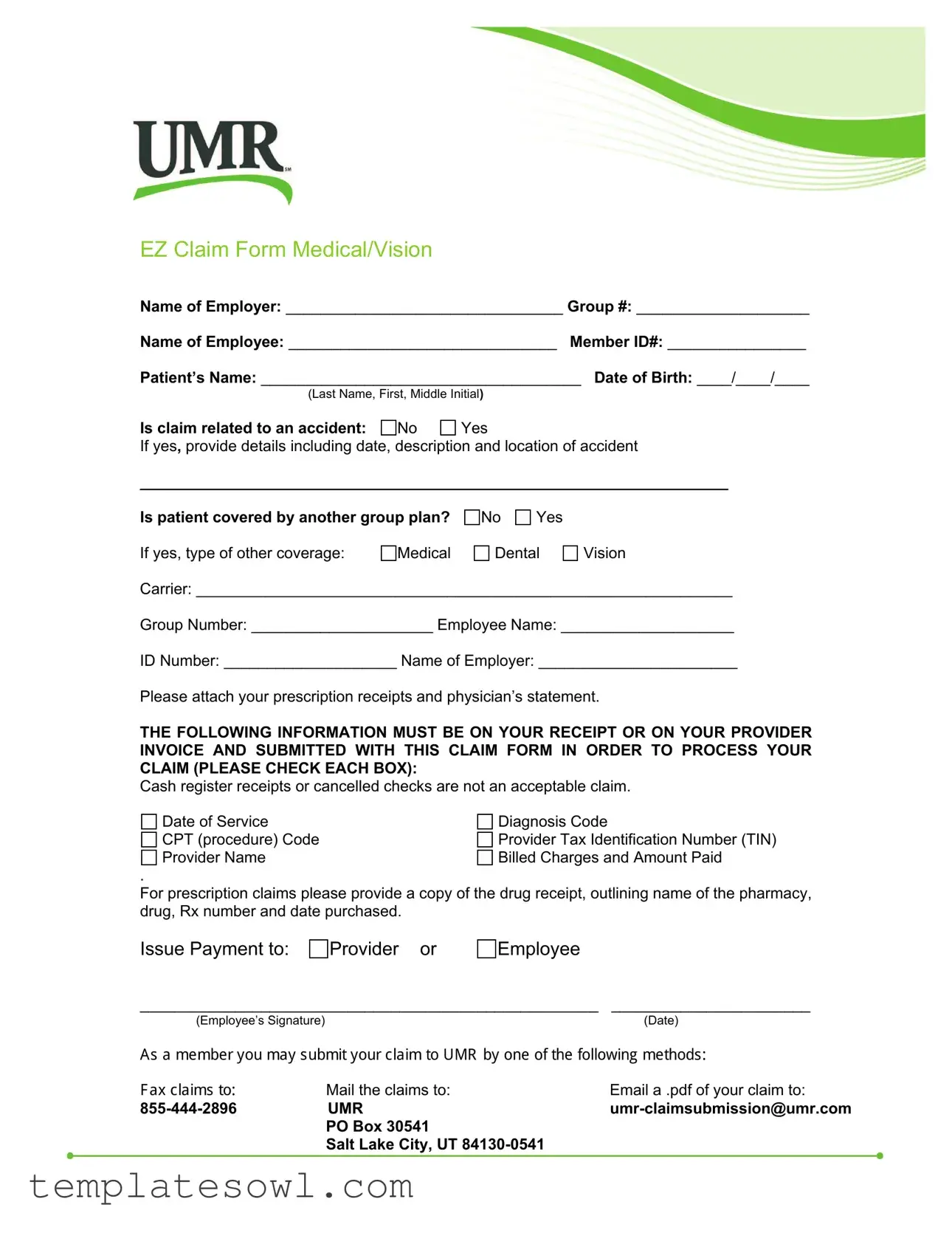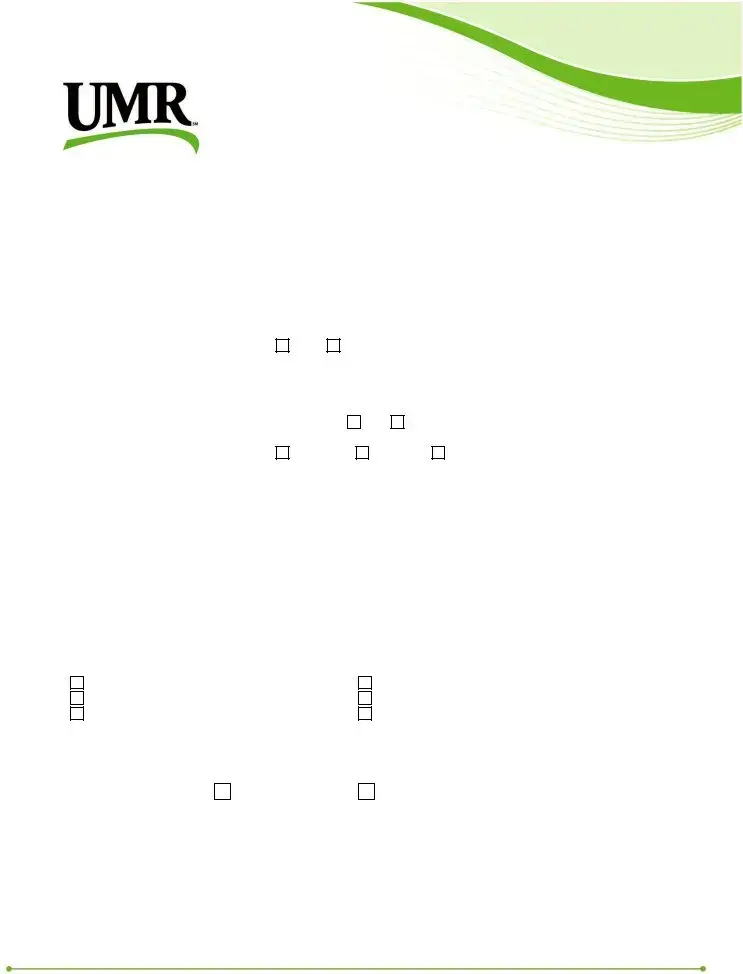What is the purpose of the UMR EZ Claim form?
The UMR EZ Claim form serves as a means for employees to submit medical or vision claims for reimbursement. This form captures necessary details, including the patient's information, dates of service, and amounts paid. A well-completed form ensures that claims are processed promptly and accurately, facilitating timely reimbursements for health-related expenses.
What information must be included when submitting the claim?
To successfully process your claim, specific information must be included on the form and supporting documents. This includes the patient's name, date of birth, diagnosis code, procedure code, provider's name and Tax Identification Number (TIN), and details of the billed charges. Additionally, receipts from prescriptions and a physician's statement must accompany the claim. Receipts from cash registers or canceled checks are not accepted, so make sure that you include valid documents to avoid delays.
How should I submit the completed UMR EZ Claim form?
Once you have completed the UMR EZ Claim form and gathered all required documents, you have several options for submission. You can mail the claims to UMR at their dedicated address: PO Box 30541, Salt Lake City, UT 84130-0541. Alternatively, if you prefer a quicker method, you may email a PDF copy of your claim to umr-claimsubmission@umr.com or fax it to 855-444-2896. It is essential to keep a copy for your records and ensure all documents are legible and complete.
What happens if my claim is denied or requires additional information?
If your claim is denied or additional information is needed, you will receive a notification outlining the reasons for denial or what further details are necessary. It is crucial to review this communication carefully and respond promptly to any requests. If you believe the denial was an error, you can appeal the decision, providing any further information or documentation as needed. Engaging with the claims department can often clarify misunderstandings and assist in resolving issues to secure the benefits you deserve.

